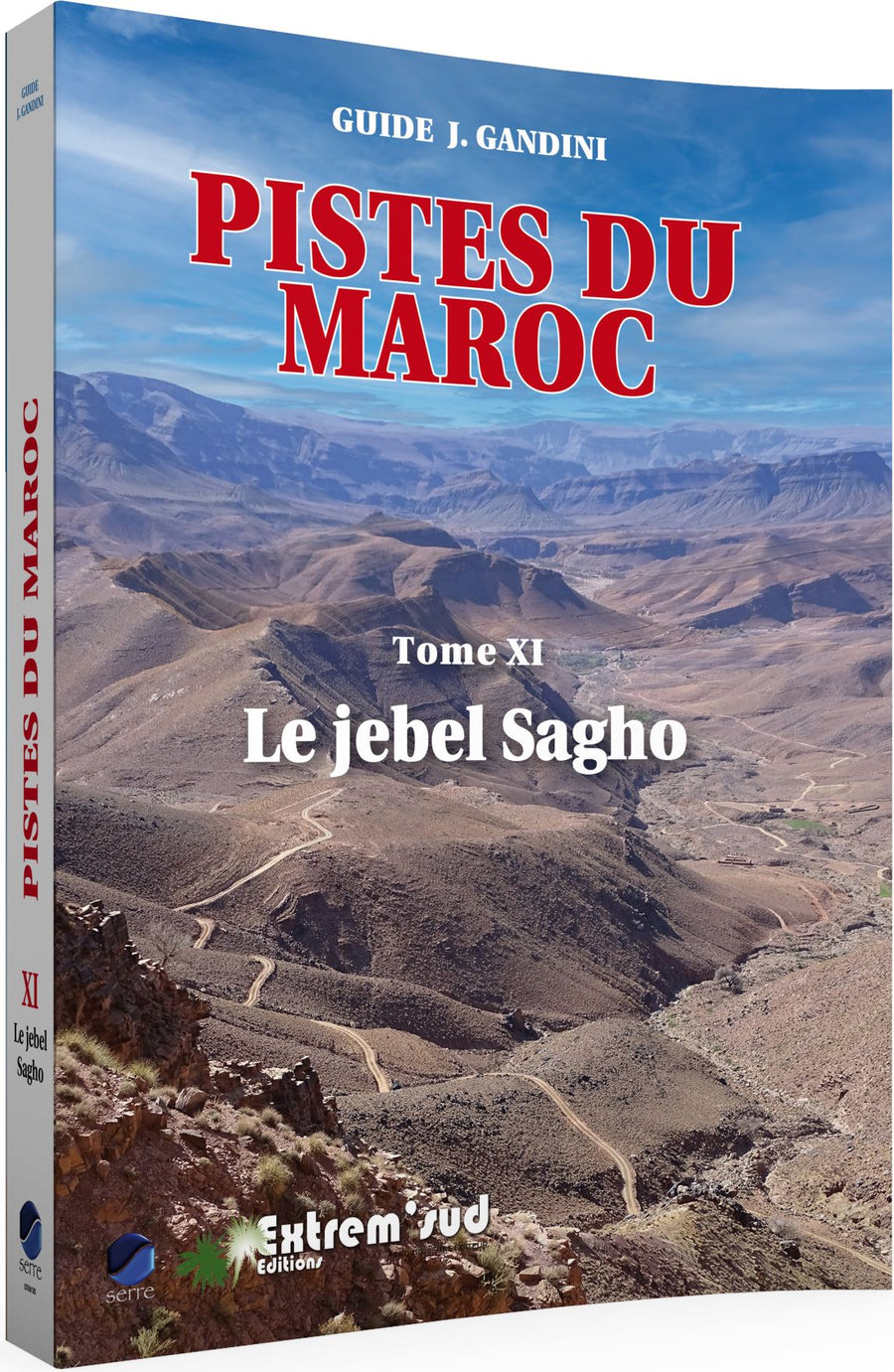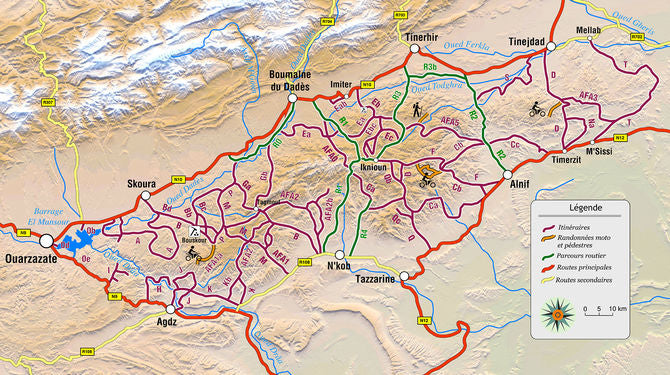Jacques Gandini's new guide has just been published. With Hoceine Ahalfi, they explored Jebel Sagho in detail, this magnificent, wild region of southern Morocco, with breathtaking landscapes located east of Ouarzazate and south of the Dadès wadi valley. Interrupted by the health crisis, the publication of this eleventh volume of the "Pistes du Maroc" collection brings together59 routes totaling2,500 kilometers and1,100 waypoints.
Djebel Sagho is the eastern extension of the Anti-Atlas, a volcanic mountain with granite hillocks, basalt organs, a chaos of black schists, pink sandstones... at the gateway to the Sahara. As far as the eye can see, vast, wild, arid spaces. A desolate land made for solitary DPM. And for a thousand leagues around, silence as your only companion. An absolute plenitude and the desire to hit the trail. From vast flatlands to rolling mountains, from sharp reliefs to steep canyons: pure, original nature. The character is strong, rustic but the heart is soft. The colors are tender and suave. Ochre, pink, brown, purple, the color chart stretches in a gradient of shimmering pastels sometimes accompanied by crushing heat. Eldorado in the heart of the desert, oases are rare; Modest green patches in the infinitely vast, they are the reminders that we are on African soil.
The wild charm of the Sagho lies in its exceptional geology: high cliffs and steep peaks, table-shaped escarpments, and deep canyons through which caravans of camels and mules travel. When you arrive on these immense plateaus, the lunar horizon is so vast that you feel like going everywhere at once to see if it's really as beautiful elsewhere!
The Sagho also surprises with the richness of its light: limpid like that of the nearby Sahara, or sometimes muted, as in the neighboring Dades Valley. The Sagho is also the Morocco of the last Berber nomads, descendants of the ancient Aït Atta lords. In the fall, after leaving the snows of the High Atlas, they pitch their dark wool tents on the slopes of the jebel until spring. They can neither read nor write, but they head with certainty amidst the Atlas Mountains and the Moroccan desert. In the Sagho, they built houses of raw stone, dug wells, planted almond trees, and cultivated wheat, barley, and various vegetables. Others raised herds of goats and sheep, and caravans of dromedaries. Most of them are sedentary today, semi-nomadic or nomadic...
ISBN/EAN : 9782864106692
Publication date: 2022
Pagination: 320 pages
Folded dimensions: 15x21cm
Language(s): French
Weight:
400 g





























